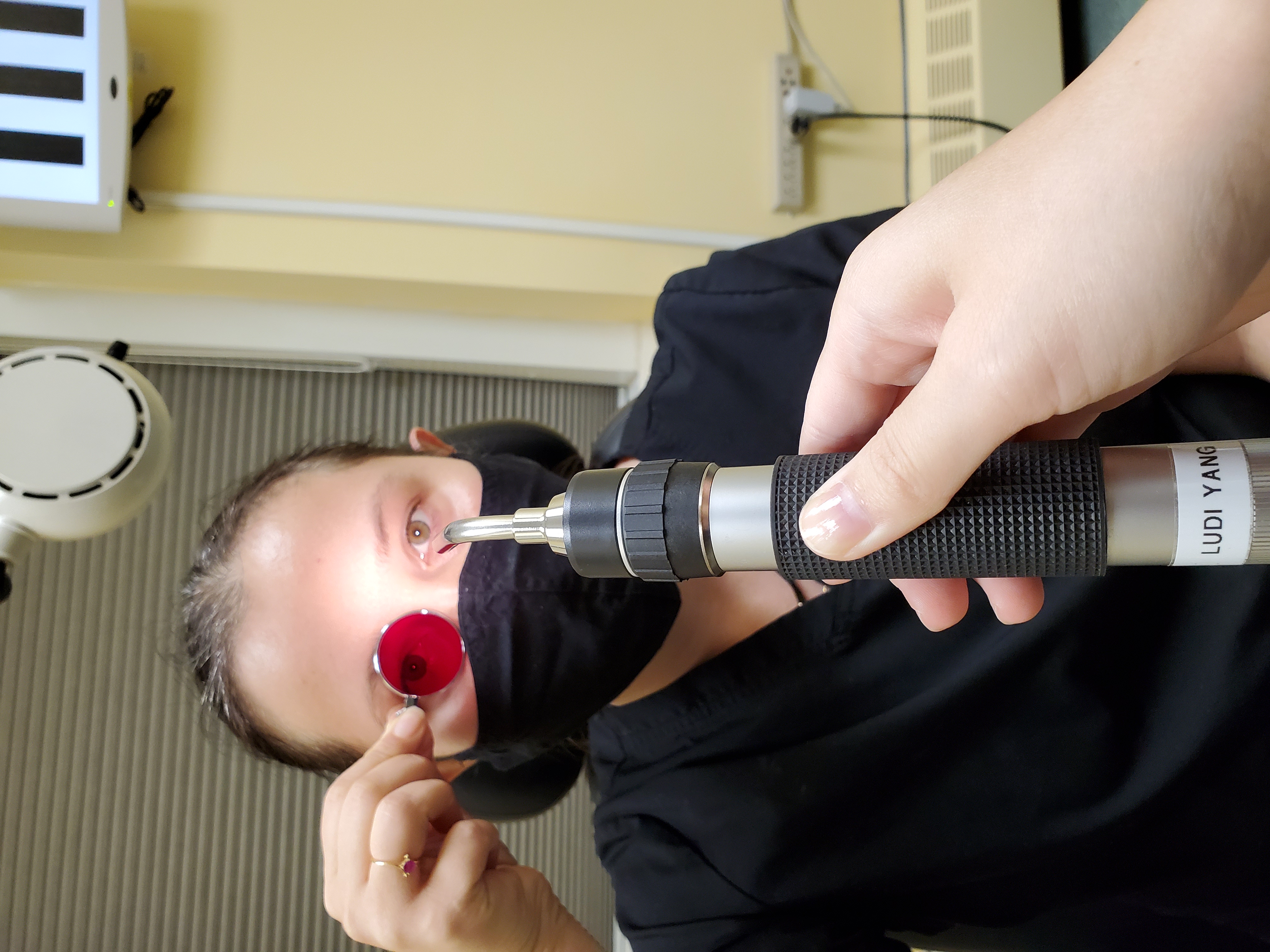 |
|
Be sure to test for vergence deficits following traumatic brain injury or other potential causes of vestibular dysfunction. Photo: Tamara Petrosyan, OD. Click image to enlarge. |
Little is known about the interrelations between dysfunction in the visual and vestibular pathways in patients with concussions and in those with vestibular disorders without a concussion. A recent study in Optometry and Vision Science observed an increased frequency of accommodative and vergence deficits in adolescent patients with vestibular diagnoses and/or concussion.
At the study team’s institution, an optometrist specializing in visual function and binocular vision disorders and a pediatric otologist specializing in pediatric vestibular disorders routinely work in tandem to evaluate patients complaining of dizziness, imbalance and vision issues. The team assessed the frequency of vergence and accommodation deficits in patients with vestibular migraine, benign paroxysmal positional vertigo and persistent postural perceptual dizziness and compared their findings against a control group of typically developing children with no history of concussion, vestibular symptoms or other conditions associated with oculomotor dysfunction. A total of 153 patients were included: 18 had vestibular diagnoses only, 62 had vestibular diagnoses related to concussion and 73 had concussion only. These findings were compared with a pediatric control group of 30 participants.
Vergence deficits were more frequent in patients with vestibular diagnoses and concussion (42%) and concussion-only (34%) compared with controls. Accommodation deficits were more frequent in patients with vestibular diagnoses only (67%), vestibular diagnoses and concussion (71%) and concussion (58%) compared with controls.
Patients with vestibular migraine and concussion (n=21) had more vergence deficits (62%) and accommodation insufficiency (52%) than concussion-only patients (47%). Patients with benign paroxysmal positional vertigo and concussion (n=20) had lower positive fusional vergence and failed near vergence facility (35%) compared with concussion-only patients (16%).
The researchers noted that “this is a useful comparison as it showed that these vision deficits were more frequently associated with vestibular migraine and benign paroxysmal positional vertigo.”
“Our study posits the need for prospective studies to address the interaction between the vergence, accommodation and vestibular systems,” they concluded. “The high frequency of vergence and accommodation deficits coexisting in patients with a vestibular diagnosis merits a detailed visual function examination, and management of deficits could affect the time course of symptom resolution.”
Chinn RN, Marusic S, Wang A, et al. Vergence and accommodation deficits in children and adolescents with vestibular disorders. Optom Vis Sci. November 28, 2022. [Epub ahead of print]. |

